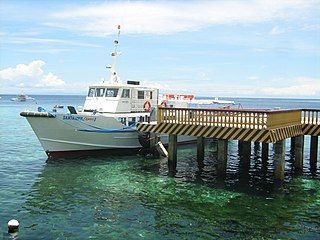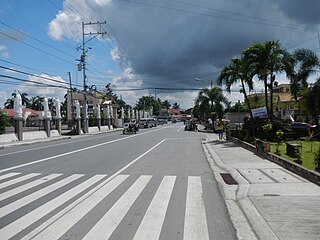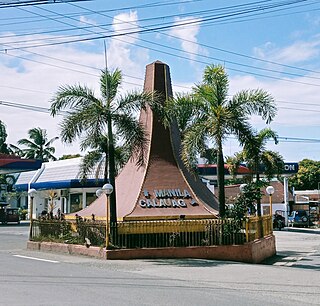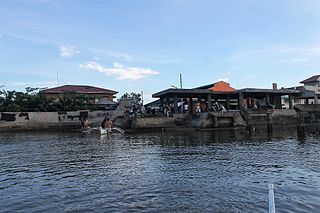This article needs additional citations for verification .(November 2013) |
Atimonan | |
|---|---|
| Municipality of Atimonan | |
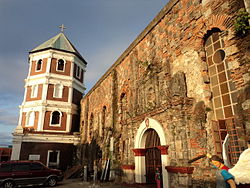 Side view of Our Lady of the Angels Parish | |
| Motto(s): Tulong-tulong sa Asenso, Mamamayan ang Panalo! English: Helping for Progress, the People Are Won! | |
| Anthem: Atimonan, Aking Bayan English: Atimonan, My Town | |
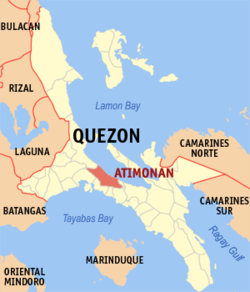 Map of Quezon with Atimonan highlighted | |
Location within the Philippines | |
| Coordinates: 14°00′13″N121°55′11″E / 14.003589°N 121.919861°E | |
| Country | Philippines |
| Region | Calabarzon |
| Province | Quezon |
| District | 4th district |
| Founded | February 4, 1608 |
| Barangays | 42 (see Barangays) |
| Government | |
| • Type | Sangguniang Bayan |
| • Mayor | Rustico Joven U. Mendoza |
| • Vice Mayor | Zenaida D. Veranga |
| • Representative | Keith Micah DL. Tan |
| • Municipal Council | Members |
| • Electorate | 38,098 voters (2022) |
| Area | |
| • Total | 239.66 km2 (92.53 sq mi) |
| Elevation | 42 m (138 ft) |
| Highest elevation | 319 m (1,047 ft) |
| Lowest elevation | 0 m (0 ft) |
| Population (2020 census) [3] | |
| • Total | 64,260 |
| • Density | 270/km2 (690/sq mi) |
| • Households | 16,701 |
| Demonym | Atimonanin |
| Economy | |
| • Income class | 1st municipal income class |
| • Poverty incidence | 6.10 |
| • Revenue | ₱ 260.2 million (2020) |
| • Assets | ₱ 418.9 million (2020) |
| • Liabilities | ₱ 57.92 million (2020) |
| • Expenditure | ₱ 210 million (2020) |
| Service provider | |
| • Electricity | Quezon 1 Electric Cooperative (QUEZELCO 1) |
| Time zone | UTC+8 (PST) |
| ZIP code | 4331 |
| PSGC | |
| IDD : area code | +63 (0)42 |
| Native languages | Tagalog |
| Website | www |
Atimonan, officially the Municipality of Atimonan (Tagalog : Bayan ng Atimonan), is a 1st class municipality in the province of Quezon, Philippines. According to the 2020 census, it has a population of 64,260 people. [3]
Contents
- Geography
- Barangays
- Climate
- History
- Demographics
- Religion
- Economy
- Tourism
- Culture
- Festivals
- Education
- Secondary & Tertiary
- Secondary
- Elementary (Primary)
- Government
- Local government
- Gallery
- References
- External links
It lies on the eastern shore of the province, 42 kilometres (26 mi) from Lucena and 172 kilometres (107 mi) southeast of Manila. Atimonan is bounded by the municipalities of Gumaca, Plaridel, Pagbilao and Padre Burgos.












